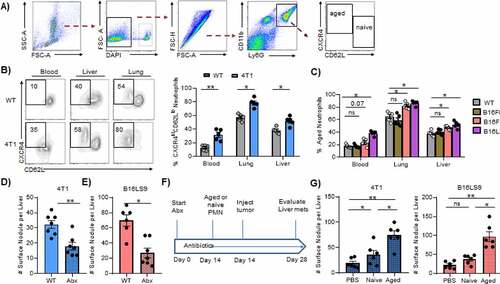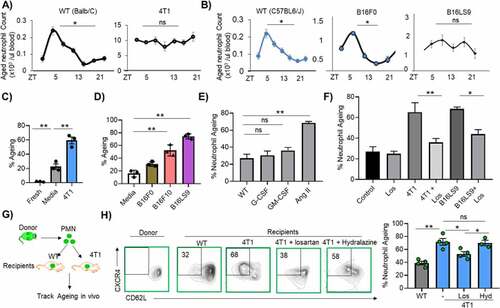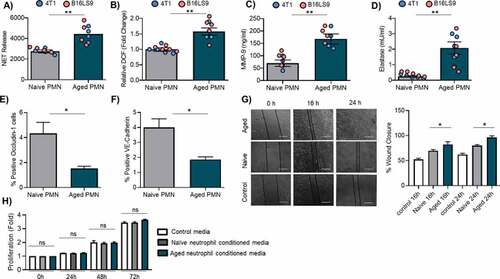Figures & data
Figure 1. CXCR4hiCD62Llo aged neutrophils accumulate in metastatic cancer.

Figure 2. Metastatic cancers increase neutrophil aging

Figure 3. Characteristics of aged neutrophils

Figure 4. CXCR4hiCD62Llo aged neutrophils promote tumor metastasis via NETs

